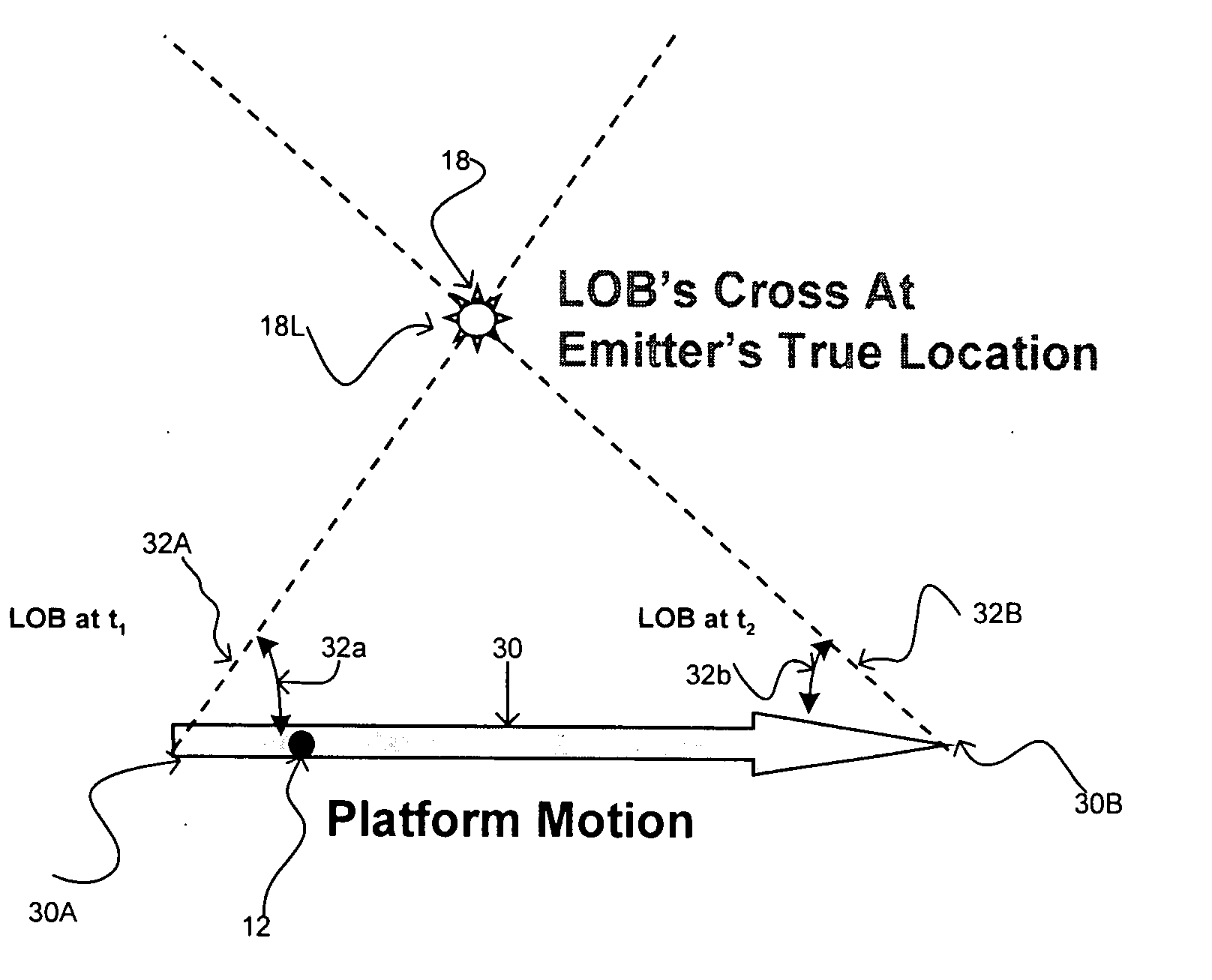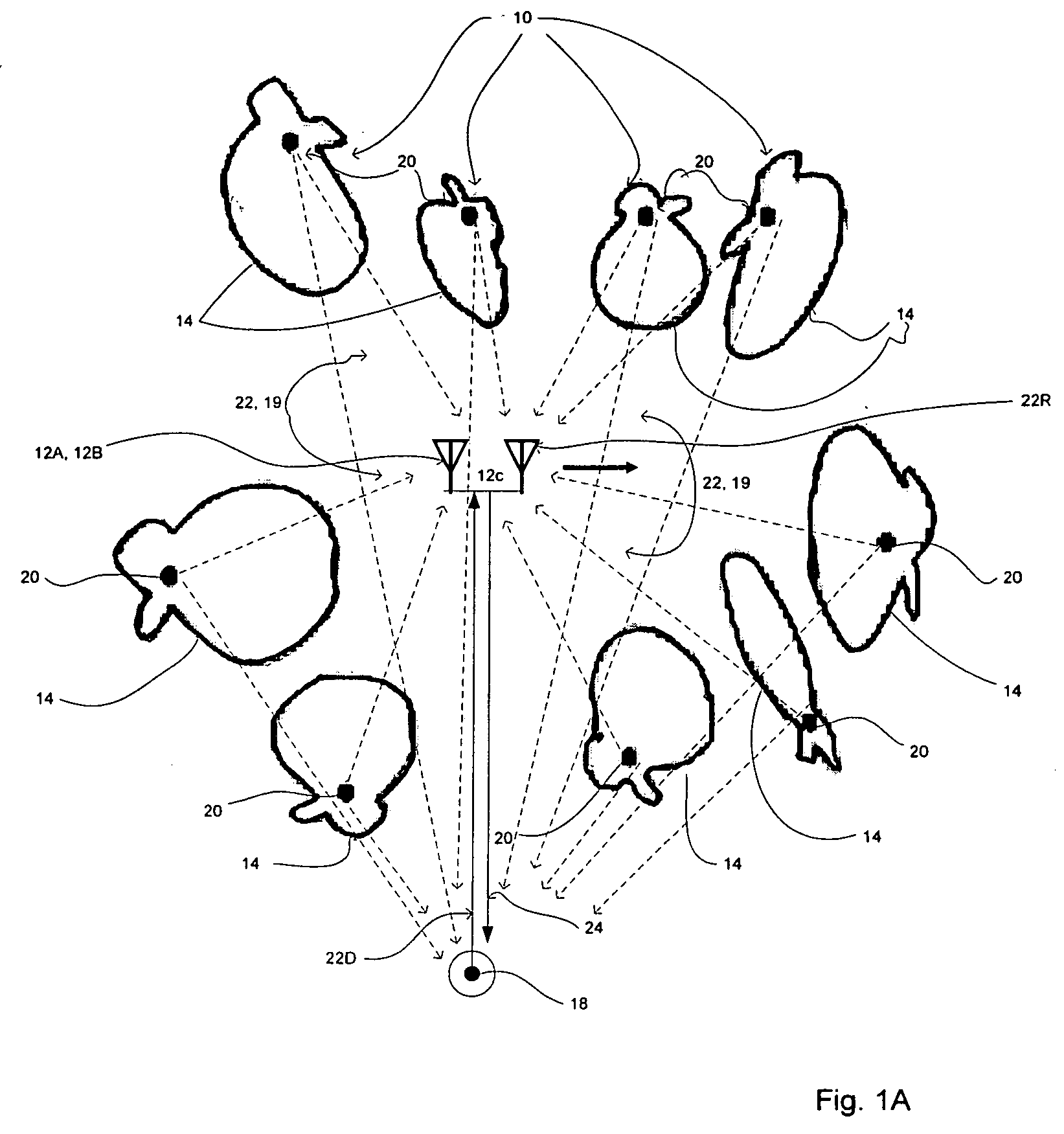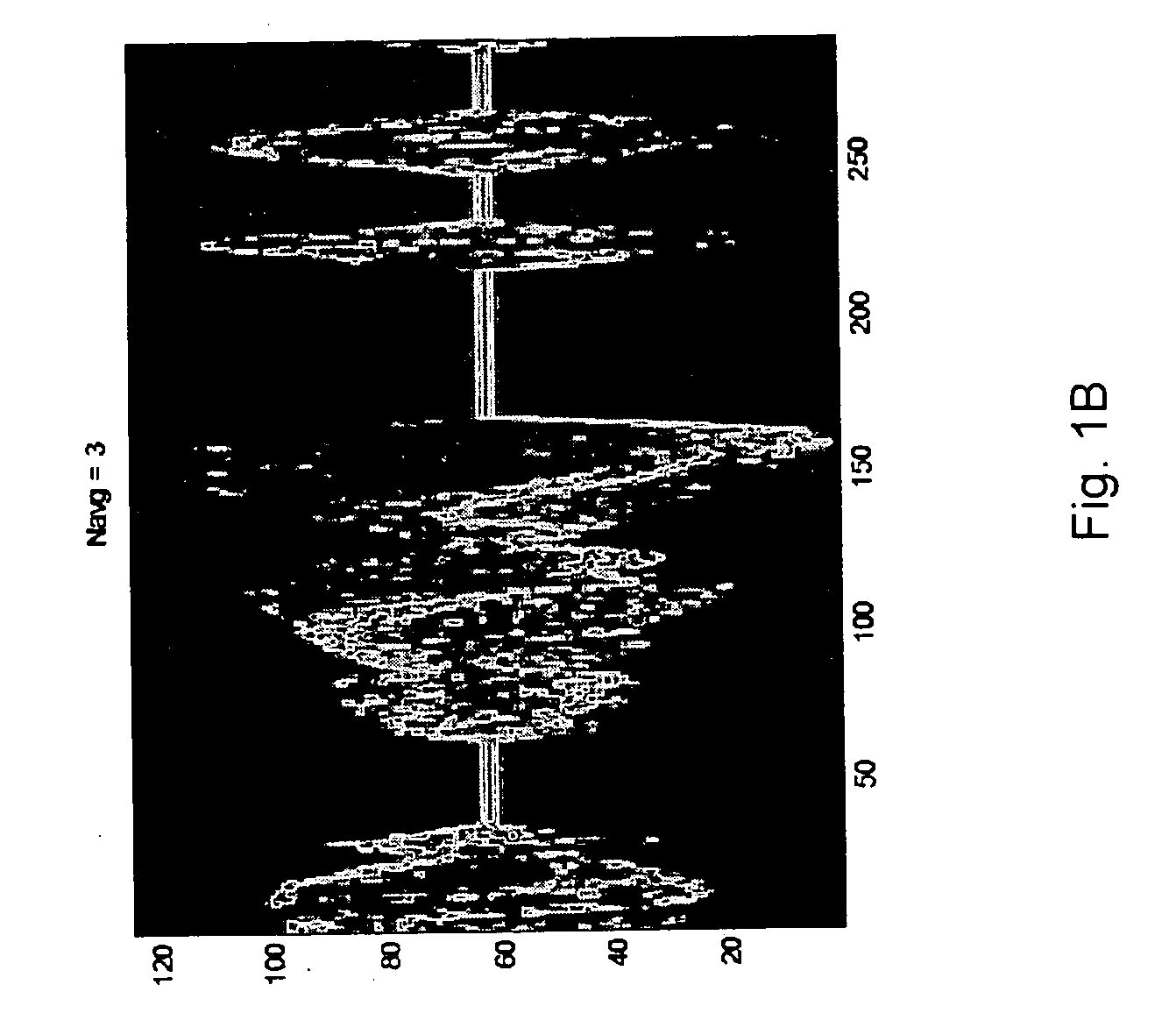Direction finding and mapping in multipath environments
a multi-path environment and direction finding technology, applied in direction finders using radio waves, instruments, reradiation, etc., can solve the problems of limited resources available for target emitter location, relatively low signal transmitted by a target emitter, and limited time available or permissible for locating a target emitter
- Summary
- Abstract
- Description
- Claims
- Application Information
AI Technical Summary
Problems solved by technology
Method used
Image
Examples
Embodiment Construction
[0029] First considering multipath and the problems arising from multipath as illustrated diagrammatically in FIG. 1A, multipath sources 10 typically appear to surround the receiving unit 12 and to have effectively random radiation patterns 14 and arise from the reflection or refraction of a transmitted signal 16 from a transmitter 18 by “scatterers”20, which may be any element of the environment capable of reflecting the original signal or of refracting the original signal around themselves.
[0030] As illustrated in FIG. 1A, conventional direction finding systems typically employ two or more DF (direction finding) receiving antennas 12A and 12B spaced apart from one another along a “baseline”12C and compare the amplitudes or phases of the signals received at the DF antennas 12A and 12B to determine the direction to the transmitter 18. This method is, however, historically subject to systemic errors for a number of reasons. For example, if the DF antennas 12A and 12B are spaced too ...
PUM
 Login to View More
Login to View More Abstract
Description
Claims
Application Information
 Login to View More
Login to View More - R&D
- Intellectual Property
- Life Sciences
- Materials
- Tech Scout
- Unparalleled Data Quality
- Higher Quality Content
- 60% Fewer Hallucinations
Browse by: Latest US Patents, China's latest patents, Technical Efficacy Thesaurus, Application Domain, Technology Topic, Popular Technical Reports.
© 2025 PatSnap. All rights reserved.Legal|Privacy policy|Modern Slavery Act Transparency Statement|Sitemap|About US| Contact US: help@patsnap.com



